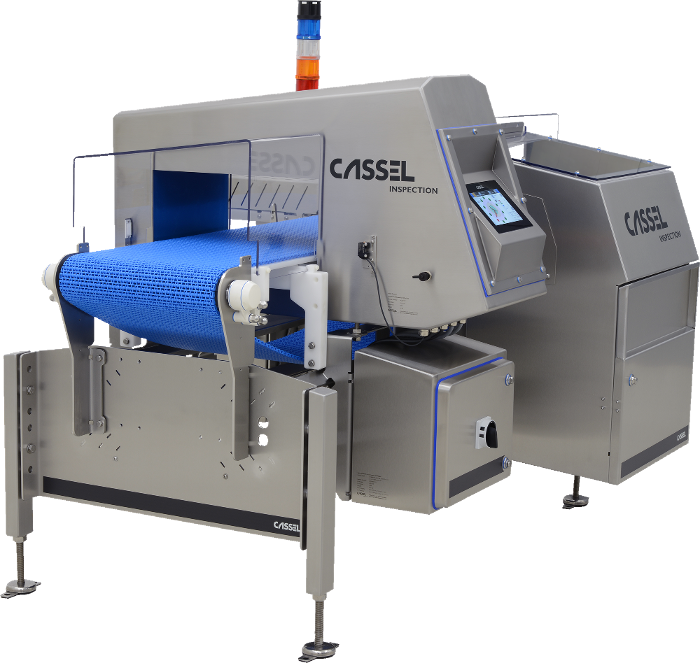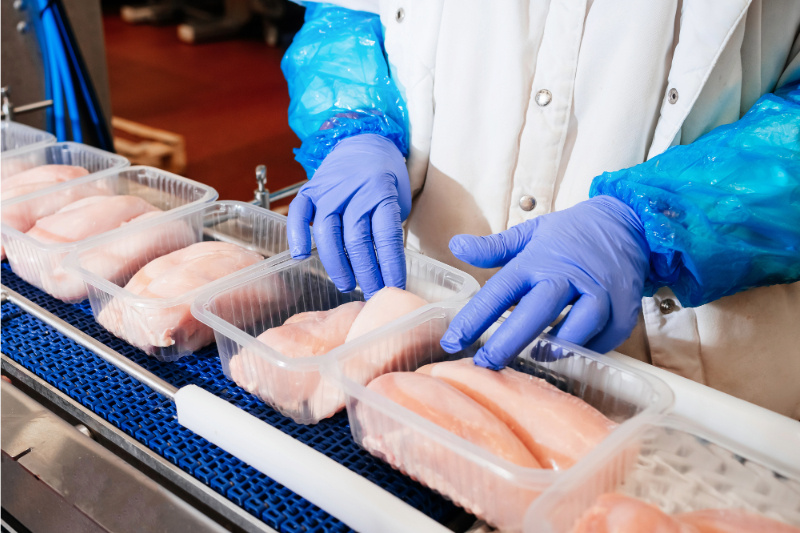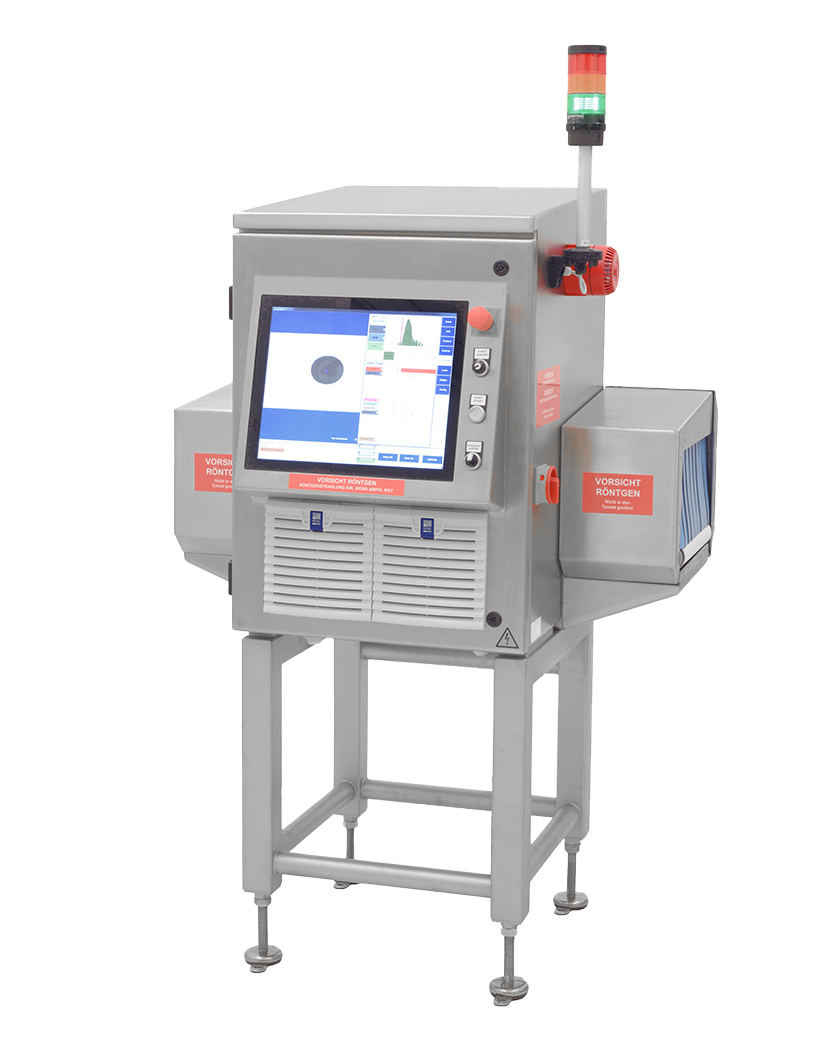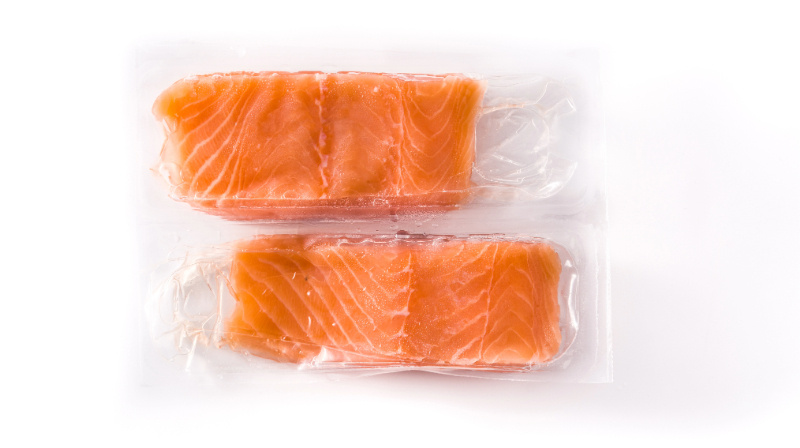Meat, Poultry, and Seafood Reliable inspection to ensure product quality and safety.
Meat, Poultry, and Seafood Physical Contaminant Inspection
From ground beef to chicken breasts and salmon filets, physical contaminant inspection enhances meat, poultry, and seafood production processes by isolating foreign materials before they can adversely affect consumers, other equipment, and brand reputation.
CASSEL Inspection is an industry leader in physical contaminant inspection, designing customized inspection systems for commercial meat, poultry, and seafood manufacturers for more than 30 years.
Inspection systems empower food processors to enhance product quality and safety, confirm regulatory compliance, and avoid the economic and reputational damage that follows a product recall.

Meat, Poultry, and Seafood Inspection: Why Do Brands Need It?
Since 2023, 80% of Americans describe themselves as “meat eaters” (Meat Institute). As of 2023, there were over 5,500 meat, beef, and poultry processing businesses in the U.S. driving a market size of over $283 billion (IBIS World). Globally, the most commonly consumed animal protein is fish, with a market size expected to reach nearly $350 billion U.S. dollars by 2027 (Statista).
Meat, poultry, and seafood processors who implement physical contaminant inspection can protect the safety of their customers and the integrity of their brands.
The majority of meat, poultry, and seafood products are harvested, processed, and packaged using metal equipment, which can result in foreign material contamination. Potential physical contaminants can include: Saw blade teeth, broken knife tips, shavings from deboning or slicing machines, and even fragments from hooks or nets. Identifying and removing physical contaminants from products during production or packaging processes is a simple step to safeguard quality and integrity.
Meat, poultry, and seafood production also demands the highest level of sanitation to avoid contamination by foodborne pathogens. As a result, all inspection systems must be able to withstand rigorous washdown programs and follow strict sanitation protocols.
How is Metal Detection Used in the Meat, Poultry, and Seafood Industries?
High-sensitivity metal detection of meat, poultry, and seafood products is best achieved at or near the end of processing. Depending on the finished product, this might be,
- Post-cutting or -grinding: to eliminate any metal fragments or shavings from knives or grinder blades and plates.
- Pre-packaging: to remove contaminated products and avoid wasting packaging materials.
- Post-packaging: to ensure all packaged materials are free from metal contaminants.
- Pre-shipping: to confirm secondary packages are free of metal contaminants and ready for distribution.
Specialized metal detectors designed for food processing integrate seamlessly into any production line to allow for reliable, accurate inspection at any critical control point.
Metal detection in meat, poultry, and seafood products can be difficult due to compositional variabilities, like moisture, fat, and bone, and because of the conductivity of naturally occurring iron. Compositional variability and conductivity can “confuse” traditional metal detectors and these product effects can cause excessive false positives and product rejections.
To meet the challenges of product effect in this industry, advanced metal detection systems like SharkTM MultisenseTM, have been designed to accurately and effectively detect foreign metal objects in even the most challenging meat and seafood products. These advanced machines can also withstand the demanding washdown requirements of food processing.

Bulk and Ground Ingredients
Meat, poultry, and seafood processors can use metal detection to ensure the safety of bulk ingredients produced for distribution or further processing.
For example, ground beef, poultry, or pork is often inspected immediately after grinding to eliminate any metal contaminants before packaging, forming, stuffing and clipping, or mixing with other ingredients. Similarly, chopped or minced fish is inspected to remove metal contaminants before mixing, forming, and breading processes.
Final Packaging
Post-packaging metal detection systems enhance consumer safety by removing any products containing physical contaminants. For wholesale applications, this step confirms the safety and integrity of each piece in a large-quantity package. For retail products, end-of-line metal detectors review every package, confirming product safety and regulatory compliance.
Metal Detectors for the Meat, Poultry, and Seafood Industry
CASSEL Inspection delivers tailored inspection solutions for meat, poultry, and seafood manufacturers, ensuring product quality and consumer safety at every production stage, from raw ingredients to final packaging. This helps prevent costly recalls and protects brand reputation.
In addition, CASSEL offers a variety of metal detection inspection systems for practically every application and industry. Discover our portfolio of advanced inspection systems designed to improve manufacturer's quality assurance protocol.

How Is X-ray Inspection Used in Meat Processing?
While metal detection is the primary means of physical contaminant inspection for meat products, X-ray inspection can help overcome unique meat, poultry, and seafood processing challenges.

Bulk Ingredients
Because X-ray inspection relies on changes in density rather than the disruption of a magnetic field, it can detect a broad range of metallic and non-metallic contaminants, including stone, glass, ceramic, and more. For example, X-ray inspection could detect bone fragments from carcass-splitting processes or stones consumed by fish prior to harvesting.
X-ray is well-suited for packaged product inspection but can present cost challenges if the system must be modified to withstand full washdown and sanitization processes.
Final Inspection
X-ray is often used to inspect packaged products before they are shipped. It is ideal for inspecting products in containers that would disrupt a metal detector, such as metalized films, metal-lidded glass, and cans.
X-ray inspection can also be used to verify product consistency by using specialized programming to identify variations indicating inaccurate piece counts, insufficient filling, or broken or otherwise damaged products.
X-ray Inspection Equipment for the Meat, Poultry, and Seafood Industry
As with our metal detection systems, CASSEL Inspection has X-ray systems for a variety of applications and industries. Discover our X-ray inspection portfolio, all designed to take your quality assurance protocol to the next level.

How Are Checkweighers Used in the Fish and Meat Industry?
Checkweighers are inline systems designed to continuously measure package weights and remove any products outside a specified range.
Checkweighers are useful for confirming the package count in multi-pack cartons and identifying overfilled packages to mitigate costly give-away. Removing underfilled packages is essential to also avoid consumer complaints which could affect brand reputation and compliance violations that would lead to USDA/FSIS action.
This inspection method is commonly performed as part of the final inspection for the meat, poultry, and seafood industries. Checkweighing systems can function as a standalone machine or can be integrated with a metal detector to provide dual inspection with a reduced overall footprint.

Why Choose CASSEL Inspection?
Since 1994, CASSEL Inspection has been a leader in the design and manufacturing of metal detection and X-ray inspection systems tailored to meet any inspection challenge and ensure ongoing product quality, consistency, and compliance.
You can learn more about CASSEL Inspection with these quick links:
If you have questions about physical contaminant inspection for meat, poultry and seafood applications, contact one of our technical experts today.



